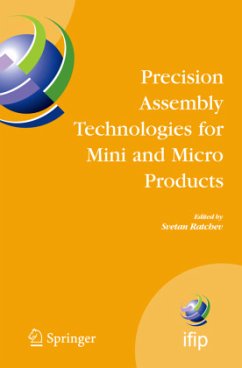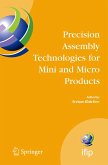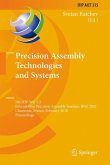These contributions to the 3rd IPAS'2006 seminar are grouped in 6 sections. Part 1 reviews new techniques for handling and feeding micro parts. Micro-robotics and robot applications for micro assembly are discussed in Part 2. An overview of different design and planning applications for microassembly is provided in Part 3. Part 4 covers reconfigurable and modular micro assembly systems and control applications. The economic aspects of microassembly including new business models are discussed in Part 5 while Part 6 presents specific technical solutions and microassembly applications.
Customers increasingly expect products that are smaller, have improved functionality and reliability and cost less. Miniaturisation and integration of mechanical, sensing and control functions within confined spaces is becoming an important trend in designing new products in industries such as automotive, biomedical, pharmaceutical and telecommunications. In micromanufacture often manual assembly becomes unfeasible due to the small size of the products. As a result microassembly is becoming a sector of strategic importance in high labour cost areas due to the specific needs of automated fabrication and assembly processes which make outsourcing a less attractive option. It is well recognised that the production of miniaturised products will require radical rethinking and restructuring of the underlying technologies and system engineering approaches in high precision assembly as well as developing unprecedented and unique commercial concepts and infrastructure for delivering new technologies. In precision assembly there is a clear need for modular and highly customisable miniaturised production systems based on plug and produce assembly units with micro and nano accuracy of operation. From the equipment point of view the key emphasis is on developing new solutions for the automatic handling of large volumes of very small parts; development of multi-process microassembly machines using a smaller mechanical base and incorporating a wide variety of specialised product specific processes, capable of meeting the increased demands on process capability, repeatability and traceability.
Customers increasingly expect products that are smaller, have improved functionality and reliability and cost less. Miniaturisation and integration of mechanical, sensing and control functions within confined spaces is becoming an important trend in designing new products in industries such as automotive, biomedical, pharmaceutical and telecommunications. In micromanufacture often manual assembly becomes unfeasible due to the small size of the products. As a result microassembly is becoming a sector of strategic importance in high labour cost areas due to the specific needs of automated fabrication and assembly processes which make outsourcing a less attractive option. It is well recognised that the production of miniaturised products will require radical rethinking and restructuring of the underlying technologies and system engineering approaches in high precision assembly as well as developing unprecedented and unique commercial concepts and infrastructure for delivering new technologies. In precision assembly there is a clear need for modular and highly customisable miniaturised production systems based on plug and produce assembly units with micro and nano accuracy of operation. From the equipment point of view the key emphasis is on developing new solutions for the automatic handling of large volumes of very small parts; development of multi-process microassembly machines using a smaller mechanical base and incorporating a wide variety of specialised product specific processes, capable of meeting the increased demands on process capability, repeatability and traceability.








